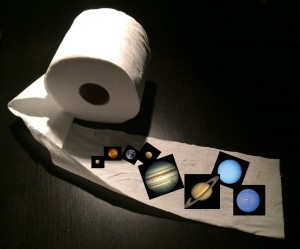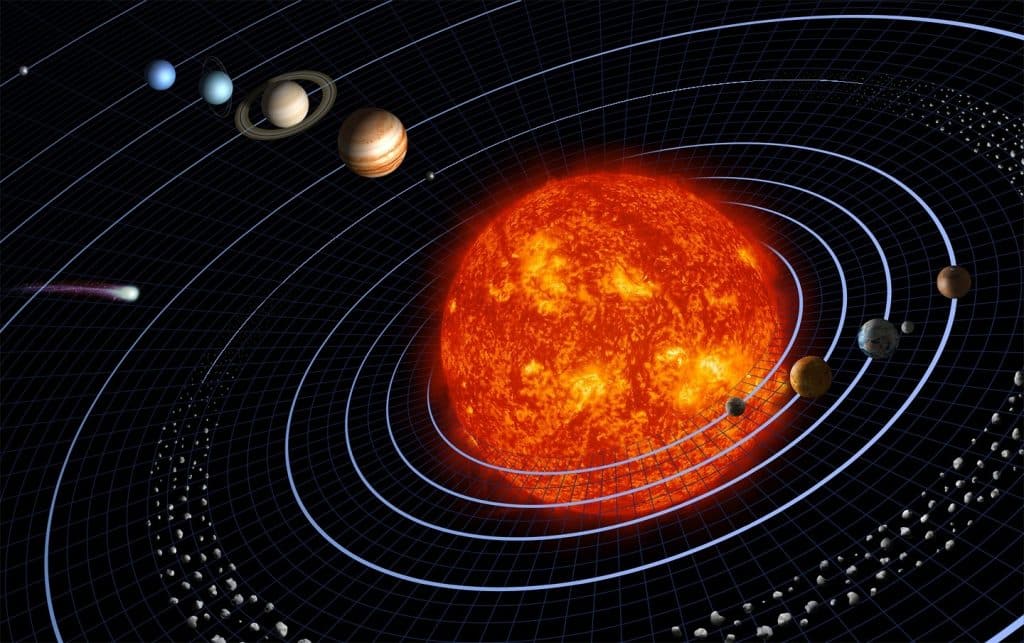Editor’s note: This post has been updated and broken links removed. Please see our policy on broken hyperlinks for more.
In the article “10 Scientific Ideas that Scientists Wish You Would Stop Misusing,” Annalee Newitz spotlights a few common scientific misconceptions. To halt the trend, learners need accurate information, in a way they can process it, at a time they’re most open to it. The middle school years are a perfect time to address abstract ideas: the vastness of space, the dimensions of creatures great and small, and geologic time are key themes around which kids struggle. Middle-schoolers, or “tweens” are unashamed to be curious about the world, which makes it easy – and fun – to blow their minds teaching these concepts. Here are some ideas for flipping the abstract to concepts that are more concrete.
Make scale models
For centuries people have observed the night sky, but many fail to recognize the magnitude of what’s out there. Solar System projects (foam balls, paint, and coat hangers) grossly misrepresent our sun and planets, yet they come back year after year. Combat them with a more accurate model.

Try this:
- Make a toilet paper model of the Solar System. Here’s an activity that works with short and long versions depending on the available room and supplies. The sheer amount of sheets used in the model helps kids understand that things are very, very far apart in space.
The earth took an enormous length of time to become the place on which we move, breathe, and drink lattes today. It took so long that people get mixed up about what happened when. This is addressed, too in Newitz’s article by paleoecologist Jacquelyn Gill (scroll to number 9). It makes sense. The human lifespan tops out at a tiny fraction of earth’s existence. Beyond that, our brains say “That was a long time ago” or “That’s a long time in the future.”
Try this:
- Look at earth’s history against the backdrop of smaller time spans. In this video Carl Sagan takes the way-back machine to the Big Bang, then scales it all down to a calendar year. Other activities focus on earth’s beginning, or when life first appeared. This video crunches time into a single day.
Make true-to-size models
The true-to-size model is a fun way to learn about objects or organisms that can be observed but are not accessible. For example, a species may be extinct, like the woolly mammoth or it might not be user-friendly, like the Portugese man o’ war. Use this type of activity for living and non-living things, as long as you have the space.
Try this:
- Challenge small groups to construct (on paper, on the sidewalk, etc.) accurate, anatomically correct models of any organism using measurements from their own bodies. Limit groups to using 1 or 2 body part measurements per member. For example, a whale shark is about 1,285 cm long. Is it more efficient to measure 200 hand-widths or 50 leg-lengths to draw the shark? Kids’ own bodies are a substantial reference because they’re generally available and usable at any time.
Use technology
The fossil record teaches us about earth’s history. It’s a description of earth’s development as told by fossils buried in layers of rock. It’s a little like reading earth’s diary: “Year 1.2 billion: I think bacteria is here to stay. Year 4.2 billion: Grew ferns and did not kill them!” Scientists use the fossil record to divide earth’s history into chunks of time which are, from largest to smallest, eons, eras, epochs, periods, and ages. They are defined by major physical and biological changes that took place. We take for granted that life has always existed and that it will continue, but after the Paleozoic era almost all life on earth was lost. Study the fossil record to learn about the fragility of life on earth.
Try this:
- Illustrate the fossil record with spreadsheet software. Divide earth’s estimated age of 4.6 billion years into segments of time, for example 92 segments of 50 million years. Let one column represent each segment. Use information from the fossil record to enter data about earth’s development over time. At this scale, bacteria won’t appear for a good 20 columns.
Here’s a way to use technology (and math) to further put to rest the foam ball model of the Solar System.
Try this:

East side of the Taj Mahal. Credit: BjÃrn Christian TÃrrissen
- If the Sun’s diameter were 1 inch and sat atop the Taj Mahal, how far away would Mars be? How small do the sun and planets need to be to fit along the Great Wall of China? You can plot the Solar System in various places on the face of the earth using the equation below, but you’ll need a scientific calculator. Use Google Earth to make an original guided tour of the planets distributed around our own. To extend the activity, the website If Earth Were a Grape has info about neighboring stars and galaxies.
![]()
Offer impossible challenges
The “impossible challenge” is the single greatest activity to try with middle school kids. It gets at the core of their ability to think about complex ideas without the skepticism that comes later. They want to believe.
Try this:
- To most people, the average size of an atom is arbitrary. We accept that we can’t see them, but that they exist because we’ve seen how some of them behave. But what if you could see atoms? Challenge kids to cut a piece of paper down to the size of an atom. They may think its possible, but after this paper cutting activity from Quarked! they will appreciate its small size. Offer a generous reward for anyone who succeeds. Be prepared; they’ll get through about 8 or 9 cuts before the paper becomes too small.
- Challenge students to jump high enough and fast enough to escape the force of gravity. Actually, this is just a technique to wake up the class after lunch, but it can lead to some good discussion about gravitational forces.
There are many resources for excellent activities that teach abstract ideas in concrete ways. You can make some up yourself, and help grow a generation of science savvy minds that get the tough stuff and can explain it to others. Just follow a few guidelines. The activity:
- must be fact based.
- must value accuracy above convenience and appearance.
- should be fun; memory is enhanced by an emotional experience.
Do you have any great ideas for teaching abstract scientific concepts? Please share them in comments.
Want to take better notes? The secret is taking the renowned Cornell method and modifying it for your personal needs. Learn how with this template and email lesson series.

